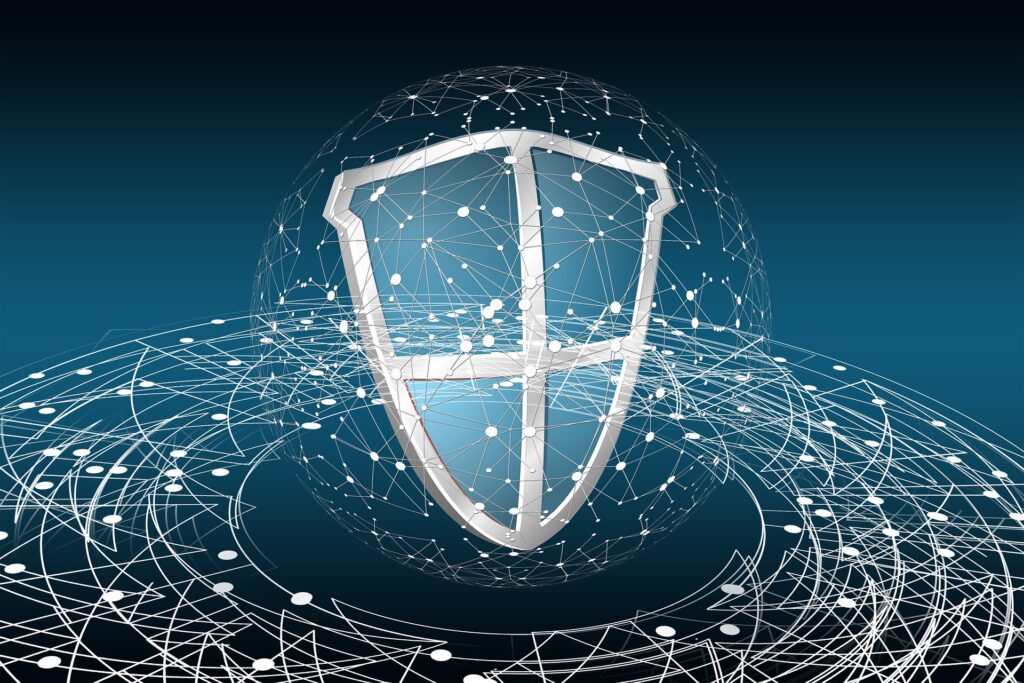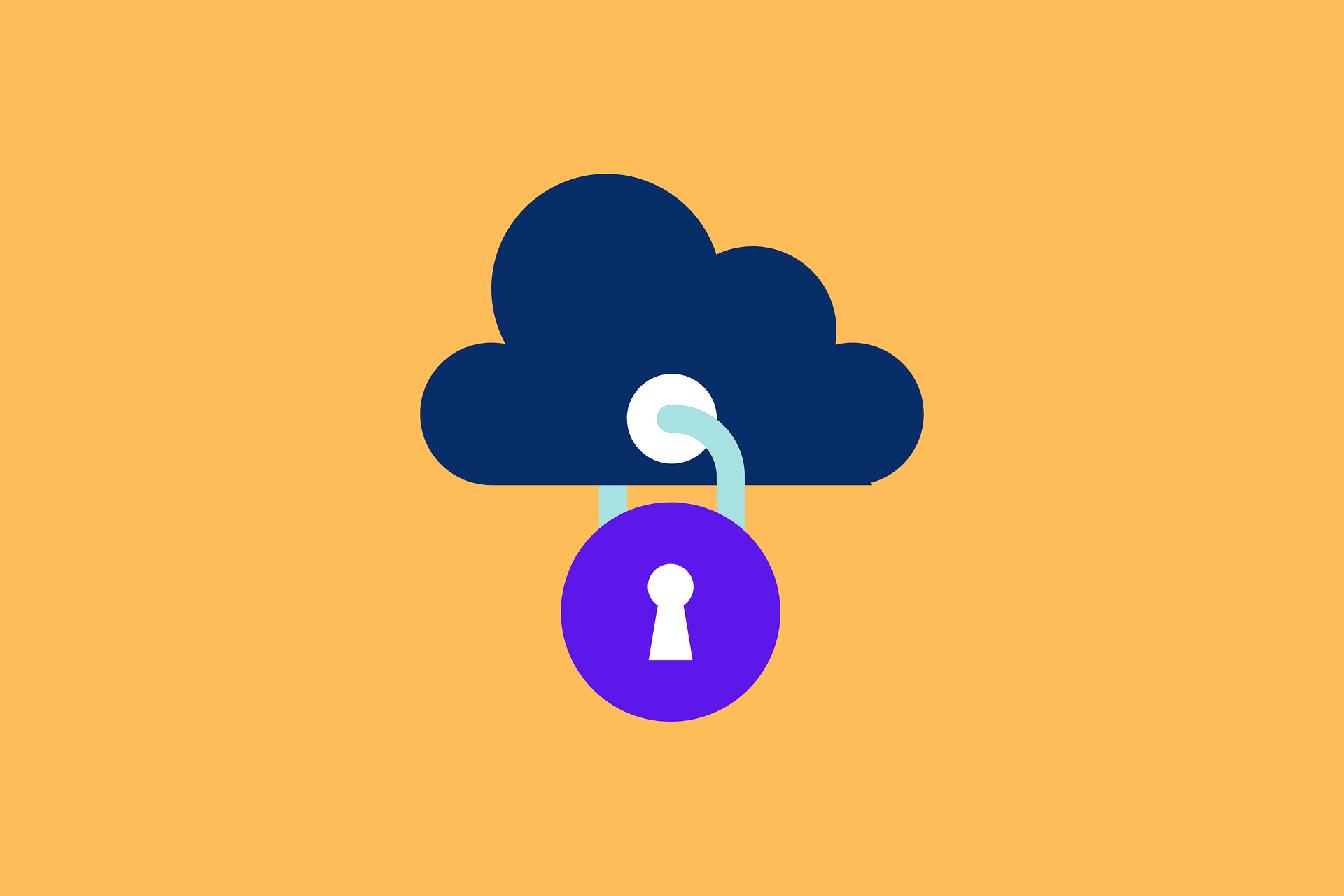Anyone that wants to move to the cloud always worries about the security of their information. Most people and companies are hesitant whenever they migrate to the cloud as they are not fully aware of the security capabilities of the cloud.
Understanding the security of the cloud is essential and leads to better decisions whenever moving from the local business and office premises to the cloud. It is also vital in determining the best cloud service provider. When you know the security capabilities of a cloud service provider, you will be in a better position to choose one that will not end up disappointing you.
A recent surge in cyberattacks and leakage of confidential information from major internet companies has also raised awareness of the reality of cyberattacks. Hackers are constantly working on new means and ways of breaking into your information systems. They study systems for security weaknesses and vulnerabilities that they can then take advantage of.
Knowing this makes it possible for you to secure yourself better. It also ensures that you choose the most secure cloud service provider to keep your information safe. Some of the hacking attacks are also known to take businesses offline, and a cloud service provider with convenient alternatives will prove to be quite valuable.
We will study various aspects of cloud security in this post. Feel free to skip to any section that interests you most.
- Current Security Threats
- Security Benefits of the Cloud
- Preventing Data Loss
- Authentication and Access Management
- Securing your Cloud Resources
- Safety Measures for the Cloud
Current Security Threats
Many security threats plague the current internet, and the cloud isn’t safe from these threats. The only difference is that the cloud has a greater level of security. At the very minimum, the cloud service provider should guarantee you a level of protection to keep your data safe.
It is possible to determine whether your cloud service provider has a good level of safety from the authentication and verification that they do for you. As you log into the cloud, are you faced with a second means of verification? Two-factor authentication is one of the leading signs and indications that the cloud service provider is good at what they do and serious about security.
Without two-factor authentication, it is straightforward for a hacker to carry out a dictionary attack on your resources and easily guess the password to your sensitive resources. A man in the middle attack can even steal your credentials and impersonate you as an administrator of the cloud resource.
Any hacker that manages to get past the security measures put in place will not make their presence known. Instead of announcing their entry, they will play it silent and hide from the system administrator and other security applications installed on your cloud. Hackers will also try to steal information and with the cloud, moving massive amounts of data is very easy.
Data loss is a massive threat for the modern cloud, and with hackers leaking information, the popularity of your company becomes a risk. Information leaking from the cloud is tough to manage, and within a few minutes, attackers might have moved a lot of information from your servers to private clouds owned by the hackers.
Hackers have also improved their working tools and will always strive to ensure that they target the very security weaknesses in the cloud. If your cloud service provider has not secured their infrastructure well enough, the hacker will likely notice vulnerabilities and use these to develop exploits. An exploit is a well-crafted attack that takes advantage of underlying security weaknesses that exist in a system.
Hackers are also making use of malware and other malicious software applications to take advantage of the cloud. Breaking into the cloud using malware means that the information gets stolen and compromised from the inside. For instance, some of the malware is designed to take advantage of weakly developed databases.
Poorly secured cloud SQL will prove to be a comfortable spot for a hacker to make their way into your cloud application. They can even craft queries that are intended to probe the cloud for any security weaknesses. Improperly prepared SQL queries, for instance, can be used in an escalation of privilege attack, which tends to get very dangerous quickly.

In an escalation of privilege attack, the hacker takes advantage of the root or administrator of the cloud system. As long as they have a way of inserting a new user into your cloud-based application, they will be able to make themselves an administrator of the system.
As you know, an administrator tends to have more permissions and control over the entire application. With the credentials and consent of the administrator or the root user, the hacker will also get to install new applications such as rootkits.
In other cases, the hacker that has escalated privilege through SQL injection will modify records in your database, which can cause your company, organization, or business millions in losses.
Paypal phishing has been identified as a quickly growing form of internet attack that hackers can use to steal money and information from enterprise applications. If you have migrated your applications and payment systems to the cloud, you must have these applications well secured.
Weakly secured payment systems will often have points of entry that hackers and malicious individuals can use to steal IP information. Hackers can use IP addresses to establish trust with applications and system users and steal information from them.
Phishing attacks have been very successful, especially when you consider the similarity of the fake website to the actual websites they are supposed to imitate. These attacks are also challenging to detect, and when you are conducted at a considerable scale, controlling them can be very difficult.
The damages from an online security attack can only be controlled when the attack is detected early. Warning systems and other security measures are recommended for the cloud as this makes sure that affected systems and applications are taken offline as soon as possible.
The moment a system is detected to have been compromised, it is vital that it is studied for any changes in the signature and pattern of the data. These changes most likely mean that the attack has affected the system in one way or the other.
DNS attacks are prevalent for the modern cloud infrastructure, and a weak cloud infrastructure makes it even more possible. The enterprise applications and systems are designed to work on dedicated networks, and through a DNS attack, it becomes possible to take over an AWS server and redirect traffic. Redirection of traffic after taking over the network also makes other kinds of attacks such as denial of services possible.
Social engineering attacks can be used where other means have failed. It takes advantage of the social nature of humans and their likelihood to associate names with authority to signify that immediate action or urgency is required.
Dropping a few essential names in an email, for instance, can cause a system administrator to immediately change login credentials for a user even without asking more questions. It is one of the most common and highly successful forms of cyberattacks that are heavily used to change cloud configuration by exploiting the system administrator.
Security Benefits of the Cloud
Luckily, the cloud is vast enough to dilute the devastating effects of hacker attacks. There is the bare minimum protection of information and networked resources provided by the SLA with the cloud service providers. The service level agreement stipulates what someone should expect from the cloud service provider.
Cloud computing service providers will also design their information systems to make it harder for outsiders to impersonate these systems’ genuine and legitimate users. For instance, two-factor authentication is being used heavily for modern cloud resources.
The authentication mechanism uses two steps in the signing in process, which ensures that it is an actual user signing in. while signing in, a verification code or OTP is usually sent through another means to confirm their identity.
Two-factor authentication is a very effective means of handling identity, especially on the cloud, where sensitive resources and applications run on the infrastructure. The users of these applications will need to be on-site and confirm their identity before getting allowed to the system.
Logs also make sure that all the successful login attempts and those that failed are recorded. It makes it possible to block out nagging traffic from the cloud system. Some of the IP addresses that seem suspicious are usually blocked out or blacklisted to ensure that the cloud is always kept safe and secure.
You can compare the cloud to an animal with thick skin. The thick hide makes it very hard for predators and other animals to mess with the animal, let alone sink their teeth into the animal. The animal that is the cloud is quite vast, and it will ignore most of the script kid attacks like water dripping off the back of a duck.
The massive size of the cloud means a bigger target, which gives the hackers a difficult time even planning the attack alone.

No matter the amount of traffic that is being targeted and directed at a given cloud, the cloud is still powerful and vast enough to take on the traffic without giving in. there is no way that a cloud can be brought to its knees by a thousand of requests per second.
The cloud is designed to be performance-intensive and, most of the time will process millions of requests without feeling it. The multi-threaded architecture of the applications also makes it possible to handle multiple users at the same time. It is the reason most modern e-commerce websites make use of the cloud.
The cloud design makes it possible for these entities to handle millions of transactions and orders every day with ease. The design of the cloud also makes it possible to take on heavy DOS attacks without giving in.
By the time the hacker makes it past the security system, you will have already made backups, and another instance of the server started to take over from the failing system. As a result, the cloud can stay on for much longer, and hackers will have to try a lot harder to be even remotely successful with their attacks.
Cloud computing services are also known to employ heavy IP rules and safety measures to ensure that any suspicious traffic is redirected to a different route. As a result, the genuine traffic to the web application on the cloud will be serviced while suspicious traffic is slowed down, metered, or blocked out.
DNS servers and other network servers such as firewalls will also ensure that all the incoming traffic has been analyzed and all the packets inspected before they can get to the cloud itself.
The cloud is designed to be secure, and updates are constantly being made. The applications and systems get patched every hour and have the latest security updates installed. As a result, they are more secure, and before the hacker can figure out a means of getting past the safety measures, you will have already patched up the security weakness and the system updated. Cloud infrastructure is always under maintenance, with millions of daemons taking care of the applications.
The applications used in the cloud are also industry standard and have been proven to work securely. The cloud also works with powerful and proven identity management systems intended to keep unauthorized users out of the way.
For instance, Samsung cloud storage uses two-factor authentication whenever it is backing up information from your home appliance and devices to the cloud. It has to be proven that you have been actively using your Samsung device for the information on it to be backed up to the cloud.
Accessing secure resources on the cloud is only possible through the use of SSL ports that are secured. Additional security measures include SSH used to access sensitive information and assets on the cloud using a private and public key combination. Role-based access control also limits the number of resources that any one user of the cloud can reach.
In this way, the extent of damage that any users can mete out on the system is limited. Using a network firewall and top antivirus applications ensures that your cloud applications are safe and secure from malware and other suspicious applications. Attacks will not be able to get past the network firewall.
Privileged access management ensures that high-level users have a more secure means of accessing the cloud resource. AWS hosting and Google Cloud hosting are some of the typical Cloud service providers that have been known to make use of identity and access management to control access to their resources. DNS spoofing is very difficult when the client device’s MAC address is used to access the cloud.
The cloud is comparatively safer and more secure as compared to traditional computing architecture. Hosting files on the premise meant that the employees had to keep resetting passwords, and in case any of them had poor password habits, getting past the security was very easy.
The traditional systems were usually designed to ensure that none of the information ever got leaked using firewalls. However, hackers still managed to get past them with significantly less work and effort. However, the cloud raises the bar for security, and hackers will have to be more heavily invested if they are to get past the mean firewalls and security measures employed by the cloud.
Preventing Data Loss
Object storage on the cloud is done in many forms. The cloud application can make use of a separate server that acts as the storage server. In other cases, the same server that hosts the application can be used as the storage server. All the data that is generated by the application is stored on the same server. If the data grows, the system administrator can attach an additional storage disk to the same server.
Other systems are designed to use a separate server for storage which means that security is a main priority. The cloud is designed to be redundant, and as a result, it is not very easy to lose information that has been stored on the cloud. You can be more confident about data stored on the cloud than that stored anywhere else.
Amazon cloud storage, for instance, has an SLA that guarantees that your information will still be intact for many years after it has been stored with very minimal or even negligible change to the data. Cloud service providers may have different guarantees on the information held on their infrastructure, but most tend to keep it very safe.
Backups are one of the ways that the cloud assures you that your information will not be lost. The backups are usually stored on different logical and physical servers to ensure they are well apart from each other.
The copy of the information is also updated regularly as it gets changed. For instance, an Amazon server processing orders from customers and taking care of their transactions will keep updating information. As more orders are placed, the information in storage keeps getting modified. These modifications have to reflect in the result, and the backups also need to be updated.
Backups are not the sole means of ensuring that your data does not get leaked or lost. With endpoint protection, the servers responsible for storing the data and keeping it safe will be kept secure. As a result, they will not be likely to lose any information.
In addition, snapshots of the data ensure that the administrators can always roll back any changes that are considered dangerous or harmful to the system. The use of snapshots ensures that the system can always recover even when hackers or a malicious script is deleting the data.
With backups and system images, it is straightforward to restore an application running on the cloud and keep running from a healthy snapshot of the entire application.
Cloud service providers also work on data encryption that keeps the data in storage encrypted. Encrypting the data means that even when the data is in transit, one cannot decrypt it. Anyone that sniffs the information will only figure out gibberish, while the authorized users of the application will receive the information in its original form.
The use of encryption of data on the cloud also makes it possible to enforce authentication. Without authentication and verification, a cloud application user will not be able to access the secure information.
Authentication provides the client application with a token which is usually set to expire after a given period. The use of a token makes impersonation and session hijacking very difficult. The tokens enable the user to access the cloud for a given duration, after which they will have to resupply their credentials.
The cloud can then secure new information in this way, and without SSL encryption, most of the data is exposed to hackers and malicious individuals. The safety and security of the information are made possible with encryption, which also prevents data loss from occurring.
Cloud providers also work with advanced protection mechanisms such as the Sophos XG firewall, ensuring that all incoming traffic is scanned before being allowed to access the cloud. For companies that use cloud-based applications and information systems for their work, the firewall ensures that only legitimate IP addresses can access the system.
Any other devices that are not allowed to get past the firewall will be met with an error page and will not access the cloud. As a result, hackers will not leak information from the cloud system as the firewall keeps them out of the system.
The cloud infrastructure is also designed to have several layers and levels of redundancy in between. This involves having several backups of the information on different servers. The backups are handy for recovery after a MITM attack or a distributed denial-of-service attack.
With the backups, it is possible to keep the cloud application running and providing services to legitimate users without any interruptions. Cloud-native architecture also tends to keep most of the data in bits and pieces distributed across the entire system. This is intended to boost the performance of the system and keep it running with ease.
Google Compute and Microsoft Azure cloud provide their users with the assurance that their information is always safe and will not get lost unless they deliberately delete the data. Even when the user deletes the data, they have a duration to recover the information, which means that their data is never completely lost.
Other providers such as Amazon Elastic Compute Cloud will ensure that your information gets backed up regularly as you work with it.
Backing up the information ensures that you can have access to the information at all times. The additional security measures such as firewalls and others protection features ensure that the backups are inaccessible unless one contacts the cloud service providers themselves.
Even when a hacker manages to get past the security measures or impersonate a high-level administrator very well, they will not be able to get to the backup. Protecting the backup makes it possible to prevent any damage that a hacker would have done to the information system at the very minimum.
A business, company, organization, or individual can use the backup in recovering the system and make it possible to revert any changes in error.
Multitenant cloud architectures, however, might present security weaknesses and an attack vector that can be taken advantage of by hackers. A hacker might pretend to be a neighbor on the cloud only to drill their way into your information vault digitally.
Remote code execution is also possible for such cloud architectures. It is often used to take over servers on the same physical server on the cloud provider’s data centers. Cloud hosting providers ensure no data loss whenever you are using their services by keeping backups and taking snapshots of your system image as you continue using it.
Authentication and Access Management
The cloud is known to have the most potent security mechanisms there are in the digital realm. Without the second part of the verification procedure, you cannot get access to the system. For instance, using the password will send you another code that will need to be entered into the web application before accessing your information on the cloud.
The upgrade comes in the face of recent cyberattacks that take advantage of brute-forcing passwords. Dictionary attacks have been increasingly used to guess passwords and without the second step in the verification, getting into the system is very simple. The hacker gets past the security whenever there is no second step in the verification process.

Identity management is one of the greatest strengths that a modern cloud service provider can have. By verifying the current user of the cloud, the provider gets to safeguard their information. The use of tokens that expire after the current session is also known to keep the users’ information safe and secure at all times.
Access management is also being used to ensure that all incidents of broken authentication are noted and dealt with. If the user stays for too long without interacting with the cloud application, they will be forced to supply their credentials after returning to the application.
The cloud is considered to be much safer than other traditional computing resources that were available. It has a greater length of encryption keys for starters, and current services such as the AWS key management service ensure that you have a long enough key.
Longer keys are harder to crack and will take longer, and use up more computing resources to break. As a result, the hacker will be discouraged from violating the security you have placed on your system. Cloud SSH is often used to log into virtual machines and other sensitive applications running on the cloud.
Users of cloud applications are usually encouraged only to log in when they need to use the application. This ensures that they are genuine users of the cloud applications. At the same time, this safety measures provide that the application users are not impersonated or their sessions hijacked.
Keeping the session active for too long without interacting with the cloud application can lead to the loss of information. A hacker can easily intercept the connection and use a data replay attack to get to the cloud itself, stealing information and doing more damage.
At the security operations center, the system designers and administrators can quickly put safeguards in place. It is also possible to monitor access attempts on the system and the log of all access attempts on the system for a given duration.
The system administrator will investigate any wrong passwords, and suspicious IP addresses blocked out. Using dedicated IP addresses has also been proven to keep cloud resources running safely and securely.
Securing your Cloud Resources
You should properly secure your cloud applications and other resources to prevent them from getting compromised by hackers. Malicious individuals often take advantage of weakly secured cloud resources. By keeping proper security measures in place, it becomes easier to prevent such incidences from happening.
It is also possible to create better policies and practices to ensure that the passwords used are not reused and are always long enough and unique enough not to be used by hackers.
Hackers have been known to take advantage of poorly configured systems. Leaving your cloud applications in their default state is typical for getting hackers crowding to your cloud application. As soon as you have been handed a cloud, you must change the settings to reflect your security standards.
For instance, you should be sure to change the ports and other security settings to reflect the standards that your company or organization has to keep information on the cloud safe and secure. Moving away from the default settings also gives the hackers a more challenging time whenever they attempt to hack into your cloud systems. Getting rid of the defaults makes it harder to make any changes to your cloud applications, and you get to stay safer and more secure in this way.
It would help if you also made your network configuration to lockout illegitimate users from the cloud. Suppose you intend the cloud to be used by a specified group of people or employees in your company. In that case, you should configure the system such that only the traffic from a particular subnet can access the system.
Narrowing down to individual segments of your company networks makes it possible to restrict the traffic to and from the cloud. As a result, you get to keep your cloud resources more secure.
Testing your cloud infrastructure for security weaknesses and vulnerabilities is also essential. It is one of the main ways to stay ahead of hackers. By identifying weaknesses in your infrastructure before they do, you have enough time to patch things up before the hacker takes advantage of the security weaknesses.
The vulnerabilities that hackers usually take advantage of are those lying around for long and haven’t been given enough attention. Testing also makes it possible for you to determine the security level of your cloud application. With the results, you will know the quality of cloud services you are receiving from your current cloud service provider.
Safety Measures for the Cloud
In addition to securing your cloud resources, it is also possible to put other security measures for your cloud. For instance, it is possible to create custom applications dedicated to interacting with the application. These client applications abstract with the cloud application and makes the work less complicated for the end-users.
For instance, your employees will process documents much quickly and more safely when you have your custom configuration for accessing them on the cloud. Custom applications are also easier to configure and can be designed to make the life of the end-users much easier.
One of the main ways to ensure that your cloud application users do not expose your cloud infrastructure to harm is securing them from the cloud itself. By keeping them unaware of what is taking place in the background, you get to take advantage of the security.
When you do this, you will determine the kind of activity that can take place between the application and the cloud. Web applications are one of the easiest ways to abstract interaction with the cloud. They take a few months to develop but have far-reaching benefits for the end-users. It is straightforward to tone down the complicated aspects of interacting with the cloud with a good design.
Your employees will interact with the cloud from the web application, and you will have hugely simplified identity management. There are modern identity management systems such as federated identity management used to simplify identity across entire organizations.
The users only need to be authenticated once while the rest of the identity and token management is taken care of by another application. Another safety measure that is often overlooked is software patches and system updates. Keeping the software update makes it possible to stay ahead of the hackers, and the system will easily deter any tricks that they conjure up.
It is also essential that you do your research on all the available options before settling on a cloud solution provider. The study will allow you to compare all the features and capabilities presented by each of the cloud service providers.
The cloud service provider that seems to be the most secure and open to suggestions will also be the easiest to work with. Reading through a few cloud providers will provide you with the best information to guide your decision-making.
Conclusion
Hesitation, whenever one is taking up cloud resources, is common. People are usually afraid of making one decision or the other. Whenever one is choosing the cloud, they will often be fearful of security issues. This article is designed to dispel the myth that the cloud is insecure. It goes ahead to show that the cloud is more secure than any other computing infrastructure that we have been able to use in the past.
It also shows where many people and organizations taking up the cloud go wrong in terms of configurations and identity management. Finally, we have learned some of the leading security strengths of the cloud, and this should be enough to guide your decision. Whenever you are moving to the cloud, ensure that you pay attention to security as this tends to have enormous consequences and effects later on.









